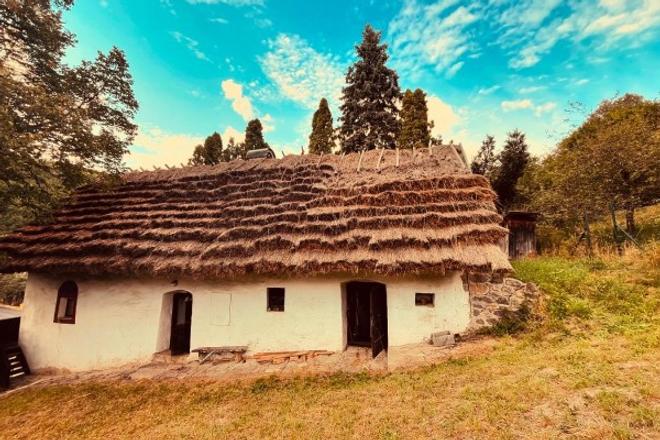Picturesque thatched roofs were once a common part of the cultural landscape of Slovakia. Just as the craftsmen and people who made and maintained them have disappeared, so too have the houses with thatched roofs disappeared from the country. There have remained fewer than 10 such houses in Slovakia.
One of them, the protected peasant house of Ján Baláž, stands in the village of Bartošova Lehôtka near Kremnica in central Slovakia. However, the wind calamity in 2012 so severely damaged its roof that the house started to leak and there is a danger of the wooden truss and the entire structure being destroyed.
Its owner, the Národný Trust (National Trust), the organisation that is especially known for organising the popular Open Parks and Gardens event, and which is also behind revitalisation of the Koch Garden and Prüger-Wallner Garden in Bratislava, resolved to restore it. However, at that time there was no organisation or company in Slovakia with the experience to carry it out. There was also a lack of the necessary raw material, the thatch.
“Nevertheless, we were lucky and became acquainted with one of the last masters of this traditional building technology, Peter Brada from the village of Hrušov, southern Slovakia,” said Michaela Kubíková, the director of the National Trust (NT). “From him we also received the much needed seed to grow rye for our thatched roof.”
For more than 12 years, with the help of many volunteers, they have been growing an old variety of rye, kribica, providing the much-needed long stalks for making roofs, and gradually restoring and maintaining the thatched roof of the house, called Slamáčik.
Fundraising campaign
After many years of work on the restoration of the roof, the National Trust has resolved to share their story and the unconventional atmosphere of the house as well as their rich practical experience with others. In November, they launched a fundraising campaign at the Donio platform to raise money to restore the house and its opening for the public.
“With your help, we want to open the Slamáčik to all visitors and those interested in traditional building technologies and rural architecture,” said Kubíková.
They have already raised more than €3,000, meaning that they are approaching the third milestone of €4,000. This money will be enough to cover the costs of the necessary expert structural assessment, professional reinforcement of the walls with an iron anchor preventing further cracks, and the restoration of the interior clay plaster in the black kitchen, the room and the pantry. The next milestones, up to €9,500, will enable them to treat the wooden structures of the house against pests, repair the wooden rural fencing around the house, build sanitary facilities for visitors, and finally prepare a digital presentation not only about the building itself, its history and architecture, but also about the traditional technology of thatched roofs and the old masters who mastered this craft.
After the reconstruction works are completed and the mini-exhibition is opened, the building will be fully involved in the “INTO places” international project.
This is a project that allows members of individual National Trusts around the world to visit, free of charge, more than 1,000 global heritage sites owned and managed by these organisations in their respective countries. Thus, members of the Slovak National Trust will be able to visit not only this house in Bartošova Lehôtka, but also unique monuments in other countries free of charge.
Those who contribute €20 during next two weeks by the end of the campaign will obtain the free access to more than 1000 global heritage sites in Slovakia and abroad in 2025. Other rewards include the “How to Restore and Make a Thatched Roof” workshop, a set of Slamáčik postcards, a weekend in the house after the reconstruction, or becoming a patron of thatched roofs in Slovakia.


 The protected peasant house of Ján Baláž with the thached roof in the village of Bartošova Lehôtka near Kremnica, central Slovakia. (source: Courtesy of NT)
The protected peasant house of Ján Baláž with the thached roof in the village of Bartošova Lehôtka near Kremnica, central Slovakia. (source: Courtesy of NT)